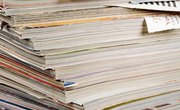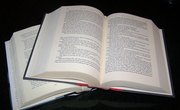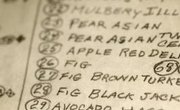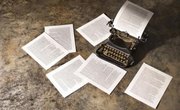Research paper writing skills are important to develop, especially if you are planning on going to college. Any college student or graduate will tell you that while in college, you must write papers. Even if you choose not to go to college, you may still have to write a research paper. Don’t be intimidated. Just take it one step at a time. The best way to start is to jump in and get going. You’ll be an expert at writing papers in no time.
Steps to Research Paper Success
The first step for any research paper is to choose the topic. One may be assigned, or the choice may be up to you. If you are able to choose a topic, choose one that is of interest to you. This will help make the process more enjoyable. If you are assigned a topic and think it will be boring, brainstorm a little and talk to your instructor. She may be flexible about letting you choose a facet of that topic that interests you more. Do not choose too broad a topic. Too broad will give you too much info to wade through and focus on. Too narrow a topic will not provide enough information to write about. Consider the required page length of the paper. This can help determine which direction to go. It may take a little time to find the right balance, but be patient. This is all part of the process of writing a research paper.
Find a good research paper reference book. Your class text may include guidelines such as these, but if not, invest in a good one. “A Writer’s Reference” by Diana Hacker is an excellent resource. Another good reference book is “Webster’s New World Student Writing Handbook” by Sharon Sorenson. These two, and others are available in bookstores. If your budget is tight, see if you can pick up a used copy. It will be well worth the investment. Take care to follow the class syllabus and guidelines for the paper. There will be helpful tips and format instructions included to help you.
Next you will need to gather your sources. The sources for your paper may be dictated by the course syllabus. Often there are a minimum number of sources required. These sources may be varied, such as books, online info, videos or dvds, magazines, newspapers, or interviews. A well-rounded paper will contain credible information from several sources. The local library is a good place to start. Ask the librarians for help if necessary.
Choose a thesis statement. A thesis statement is simply the sentence that sums up your topic. It is used as a guideline for your paper. It usually appears in the opening paragraph of your paper. An example of a thesis statement for a paper about the alternative fuel biodiesel might sound like this. “Biodiesel is an alternative fuel that can be made from natural ingredients.” Keep in mind that your thesis statement may change or be revised as you do your research. This is normal, so don’t stress over any changes. Just make sure it acts as a guide. The rest of your paper should support and prove the thesis statement.
Once the topic is chosen, sources are gathered, a thesis statement is written, reading and note taking are next. Keep good records of your sources. Using file cards to record source information and notes is a good way to stay organized. Record the book title, author, publisher, city of publisher, copyright date, and page numbers from where your information was taken. As you review the source, jot down notes about the topic that will help you as you write the paper. You will probably refer to these notes often, so make sure they are legible, and complete enough to work with. Store the note cards either in a file card box or with a rubber band around them.
The writing plan and outline are next. They are important tools to help order the information for the paper. A good way to organize is to break the paper down into headings such as beginning, middle, and end. The beginning contains the thesis statement and introduces the topic. The middle is the body of the paper and contains the main supporting information. The end wraps up with a conclusion, often restating the thesis statement in other words. The outline simply lists the topic’s main idea and points you will make throughout the paper. Write your thesis statement at the top of the paper, and then divide the outline into sections using beginning, middle, and end as your mental guideline. You may use Roman Numerals for each heading, with numbers or lower case letters for the sub headings and other info. Step Seven contains a short example of an outline.
Thesis statement: Biodiesel is an alternative fuel that can be made from natural ingredients.I. Beginning (list your main point to open with here)a) opening thoughts b) more opening points II. Middle (list a summary of supporting info here)a) supporting infob) more supporting infoIII. End (list the final idea here)a) final thoughtsb) conclusion
With the writing plan in place, it is time to start the rough draft. Just start writing, using your outline and thesis statement as a guide. This is the rough draft, which means that it will undergo many changes. As you write, make a note next to info such as direct quotes that will need to be cited in the body of the paper, as well as in the bibliography or works cited page. Write the source and page number down. It will make it easier when you revise and complete the paper.
The Works Cited Page, or Bibliography, is the page that is placed at the end of the paper. Written in alphabetical order according to source title, it shows where you got the information for the paper.Your instructor and readers may check the sources to see if you have written an accurate paper. The sources will also need to be cited within your paper, either in footnotes or in parenthetical references, depending on what the paper’s requirements are. Consult your syllabus, and refer to your research paper reference guide for more specific details on how to cite sources with a paper. There are two main styles to cite sources for a paper, the MLA (Modern Language Association) and the APA (American Psychological Association). Check with your instructor to see which style is required. See Step Ten for MLA Works Cited Page examples.
This is an example of entries for books on a Works Cited Page, according to the MLA style.Hacker, Diana. A Writer’s Reference. Boston: Bedford/St. Martin’s, 1999.Sorenson, Sharon. Webster’s New World Student Writing Handbook. New York City: Macmillan, 1997.Note that the entries are in alphabetical order according to the author’s last name, and the book titles should be underlined. Note also the different types of punctuation after each item. The correct order for a book entry is author’s last name, first name, book title (underlined), city of publication, publisher, and date published. This info will vary slightly depending on the type of source. Periodicals, online sources, etc. will contain different info, so consult your writer’s reference guide and syllabus for more details.
The revision and editing process is next. This is where your work gets polished. Use spell and grammar check if you are using a computer. Don’t depend solely on this though, sometimes it will miss a little thing like the use of the wrong word (ex.: “your” instead of “you're”). Have a family member or friend read over the paper for an outside opinion. Often we miss things that others pick up. Aim for a polished, smooth paper that informs the reader well. Don’t forget, this takes time too, but it is an important step in the process.
Finalize the sources cited within the paper and the Works Cited Page. Finish the final draft. Don’t forget that the Works Cited Page will need to be alphabetized according to source title. Consult your research paper writing book and syllabus for more helpful information and writing tips. When you are nearly done, read over it at least one more time to catch rough spots or overlooked errors.
Tip
Allow plenty of time to assemble sources and information. Don’t stress when writing it, get something down on paper, and go from there. Even the worst rough draft gives you a starting place.
Warning
Don’t wait till the last minute to write your paper. It will look like you wrote it at the last minute.
Warning
Don’t plagiarize others’ work. It is a serious offense. Would you want someone saying that they wrote something that you wrote?
Related Articles
Tips
- Allow plenty of time to assemble sources and information. Don’t stress when writing it, get something down on paper, and go from there. Even the worst rough draft gives you a starting place.
Warnings
- Don’t wait till the last minute to write your paper. It will look like you wrote it at the last minute.
- Don’t plagiarize others’ work. It is a serious offense. Would you want someone saying that they wrote something that you wrote?
Writer Bio
Karen Lange is a freelance writer whose work has appeared in Real Authentic Women, Westchester Parent, Knowledge Quest, The Link, Homeschoolers Notebook, TopNotch Writer, Home School Enrichment, and Family Times magazines. A graduate of The Institute of Children’s Literature, Lange is also a member of the Clear Creek Writers.










